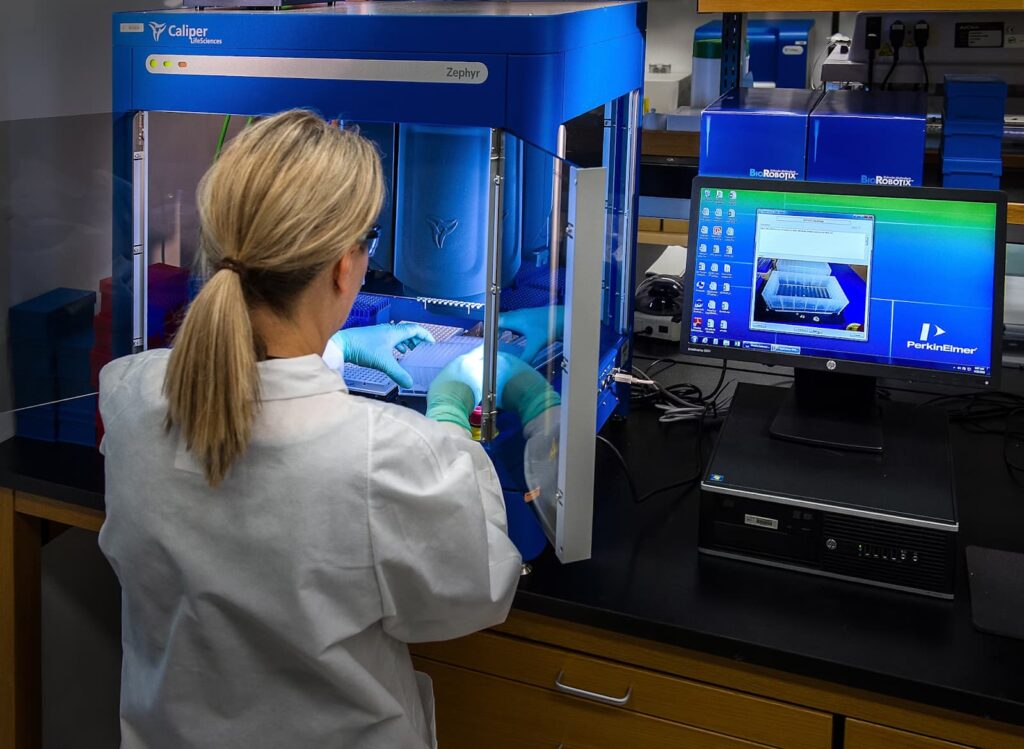Cloud computing has entirely altered the IT system in a variety of industries, providing unprecedented scalability, flexibility, and cost efficiency. By transitioning from conventional on-site IT systems to cloud-based solutions helps companies simplify their processes, improve data management, and raise general effectiveness. This transformation is evident in numerous sectors, such as healthcare, finance, retail, transportation, and education. A prime example is the cloud-based flight board at Heathrow arrivals terminal 3, which leverages cloud technology to deliver seamless real-time updates. This article delves into the technical aspects of cloud computing across these five industries, illustrating its revolutionary impact.
Healthcare: Enhancing Patient Care and Data Management

In the healthcare sector, cloud technology has redefined industry standards by improving patient care, data management, and operational efficiency.
Electronic Health Records (EHR):
- Data Storage and Access: Cloud-based EHR systems store patient records on remote servers managed by service providers. These systems use distributed databases to ensure high availability and fault tolerance. Data is replicated across multiple geographic locations, ensuring that patient records are always accessible, even in the event of a server failure.
- Interoperability: Cloud platforms facilitate interoperability between different healthcare providers by using standardized APIs and data exchange protocols such as HL7 and FHIR. These protocols enable seamless data sharing, ensuring that patient information is consistent and up-to-date across different systems.
- Security: Service providers enforce rigorous security measures, including data encryption (both at rest and in transit), access control, and regular security audits. Multi-factor authentication (MFA) and role-based access control (RBAC) further strengthen security by ensuring that only authorized personnel can access sensitive patient information.
Telemedicine:
- Real-Time Communication: Telemedicine platforms leverage web-based video conferencing services, such as WebRTC (Web Real-Time Communication), to provide secure and reliable video consultations. These services use low-latency streaming protocols to ensure high-quality video and audio, even over unstable internet connections.
- Remote Monitoring: Telemedicine systems integrate with various IoT-enabled health monitoring devices, such as glucose meters, heart rate monitors, and blood pressure cuffs. Data from these devices is transmitted in real-time to remote servers, where it is processed and analyzed to provide actionable insights to healthcare providers.
Advanced Diagnostics:
- Machine Learning and AI: Cloud platforms provide powerful machine learning (ML) and artificial intelligence (AI) tools, such as TensorFlow and Azure Machine Learning, to analyze medical images, genetic data, and other complex datasets. These tools use deep learning algorithms to detect patterns and anomalies, aiding in accurate diagnosis and personalized treatment plans.
- Scalability: Cloud infrastructure can scale computational resources dynamically to handle large volumes of data, enabling the processing of high-resolution medical images and complex genomic sequences without latency.
Finance: Securing Transactions and Enabling Innovation

The finance industry relies heavily on cloud computing to upgrade security, streamline operations, and drive innovation.
Transaction Security:
- Encryption: Service providers use advanced encryption standards (AES-256) to protect sensitive financial data. Data is encrypted both at rest and in transit using TLS (Transport Layer Security) protocols, ensuring that information remains secure during transmission and storage.
- Authentication and Access Control: Financial institutions use multi-factor authentication (MFA) and single sign-on (SSO) systems to secure access to online applications. Role-based access control (RBAC) ensures that users have the minimum necessary access to perform their duties, reducing the risk of unauthorized access.
- Continuous Monitoring: Platforms provide continuous monitoring and logging services, such as AWS CloudTrail and Azure Security Center, to detect and respond to security threats in real-time. These services use ML algorithms to identify unusual patterns and potential security breaches.
Big Data Analytics:
- Real-Time Data Processing: Financial institutions use big data platforms, such as Hadoop and Spark, to process vast amounts of market data in real-time. These platforms use distributed computing frameworks to perform parallel processing, enabling the analysis of large datasets with low latency.
- Predictive Analytics: Analytics tools employ machine learning algorithms to predict market trends, customer behavior, and investment opportunities. These tools analyze historical data and identify patterns that can inform trading strategies and risk management.
Financial Innovation:
- API Integration: Platforms provide APIs that enable financial institutions to integrate with third-party services and fintech applications. These APIs support open banking initiatives, allowing customers to access a wide range of financial services through a single platform.
- Blockchain Technology: Blockchain platforms, such as IBM Blockchain and Azure Blockchain Service, support the development of secure and transparent financial applications. These platforms provide instruments for building and deploying smart contracts, enabling automated and tamper-proof financial transactions.
E-Commerce Platforms:
- Scalability: E-commerce solutions such as Shopify and Magento, provide the scalability needed to handle fluctuating traffic and transaction volumes. They use auto-scaling features to allocate resources dynamically, ensuring that online stores remain responsive during peak shopping periods.
- Payment Processing: Platforms integrate with various payment gateways to provide secure and seamless transaction processing. These integrations use tokenization and encryption to protect sensitive payment information.
Transportation: Improving Efficiency and Safety
The transportation industry benefits from cloud computing by enhancing operational efficiency, improving safety, and enabling real-time communication.
Fleet Management:
- Real-Time Tracking: Fleet management systems use GPS data to track vehicle locations in real-time. They integrate with telematics devices to monitor driver behavior, vehicle health, and fuel consumption.
- Route Optimization: Platforms provide route optimization tools that use real-time traffic data and ML algorithms to plan efficient routes. These tools consider factors such as traffic conditions, road closures, and delivery schedules to minimize travel time and reduce fuel consumption.
Passenger Services:
- Online Booking and Check-In: Passenger service systems support online booking, check-in, and seat selection. They integrate with airline reservation systems and provide real-time updates on flight statuses.
- Real-Time Information: The cloud-based flight board at Heathrow arrivals terminal 3 exemplifies the benefits of cloud computing in providing real-time information. This system integrates with various airport and airline systems to deliver accurate and timely flight updates, enhancing the passenger experience.
Traffic Management:
- Data Integration: Traffic management systems aggregate data from sensors, cameras, and GPS devices to monitor traffic flow. They use real-time analytics to identify congestion patterns and optimize traffic signals.
- Incident Management: Platforms provide tools for incident management and emergency response. These tools use real-time data to coordinate emergency services, reroute traffic, and manage public communication.
Education: Enabling Remote Learning and Collaboration

The education sector has embraced cloud computing to advertise distance learning, enhance collaboration, and streamline administrative tasks.
Learning Management Systems (LMS):
- Content Delivery: LMS platforms, such as Canvas and Blackboard, deliver course materials, assignments, and assessments to students. These platforms use content delivery networks (CDNs) to ensure fast and reliable access to educational content.
- Student Engagement: LMS platforms provide tools for student engagement, such as discussion forums, quizzes, and virtual classrooms. These tools use real-time data to track student participation and performance.
Collaboration Tools:
- Video Conferencing: Video conferencing tools, such as Zoom and Microsoft Teams, enable remote collaboration and virtual classrooms. These tools use low-latency streaming protocols and adaptive bitrate algorithms to deliver high-quality video and audio.
- Document Sharing: Document sharing platforms, such as Google Drive and Microsoft OneDrive, facilitate collaborative editing and file sharing. They use real-time synchronization to ensure that all participants have access to the latest version of documents.
Administrative Efficiency:
- Student Information Systems (SIS): SIS platforms manage student records, enrollment, and scheduling. They integrate with other administrative systems to streamline operations and improve data accuracy.
- Financial Management: Financial management systems, such as Workday and Oracle Cloud, handle budgeting, payroll, and accounting tasks. These instruments offer immediate financial reporting and analytics, facilitating well-informed decision-making.